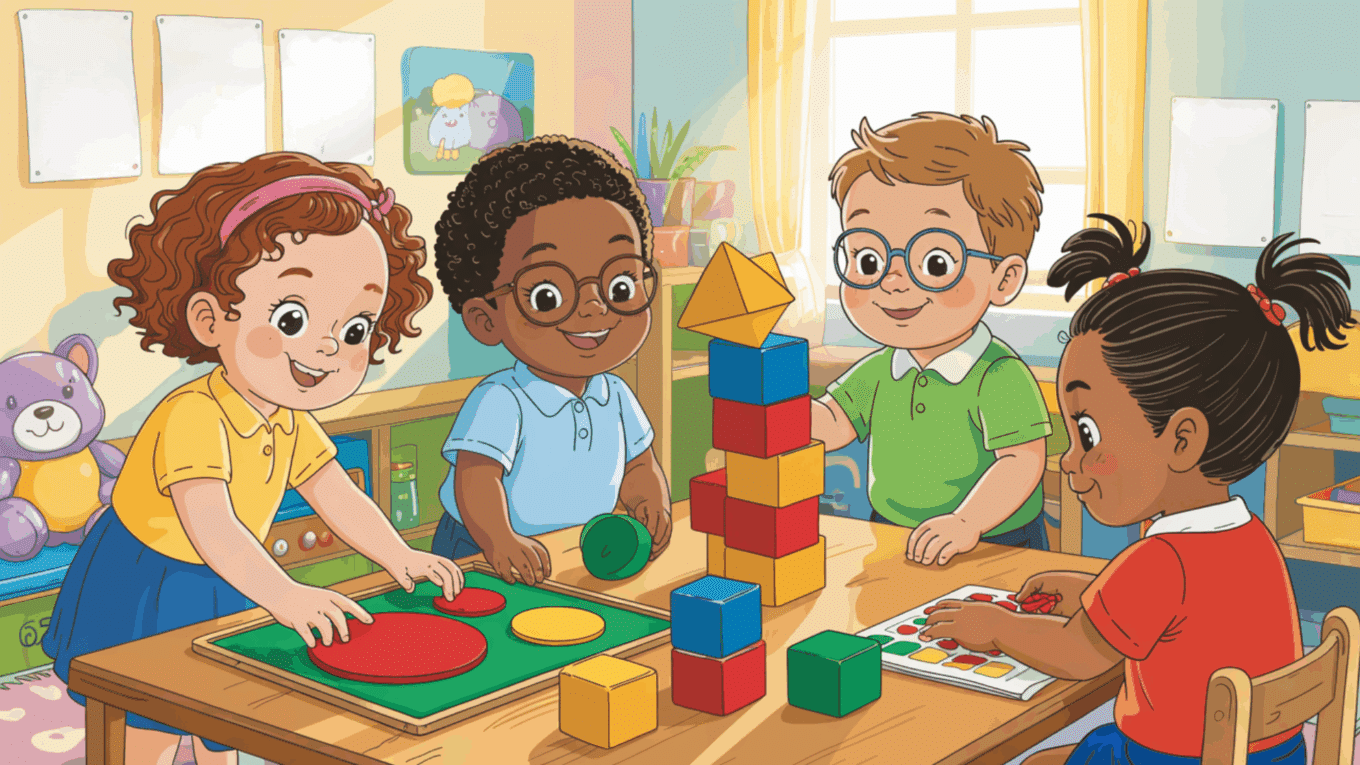Teaching shape recognition to young children can be tough. Many teachers struggle to find fresh ideas that keep kindergartners engaged while learning basic geometry concepts. Parents too find it hard to reinforce shape learning at home with fun activities.
This blog offers a solution with simple, practical shape activities for kindergarten students. These hands-on tasks help children identify, sort, and create with various shapes while having fun in the process.
The following sections present fun and engaging shape activities sorted by difficulty level. Each activity needs minimal materials and includes clear instructions for classroom or home use.
Why Shape Activities for Kindergarten are Important?
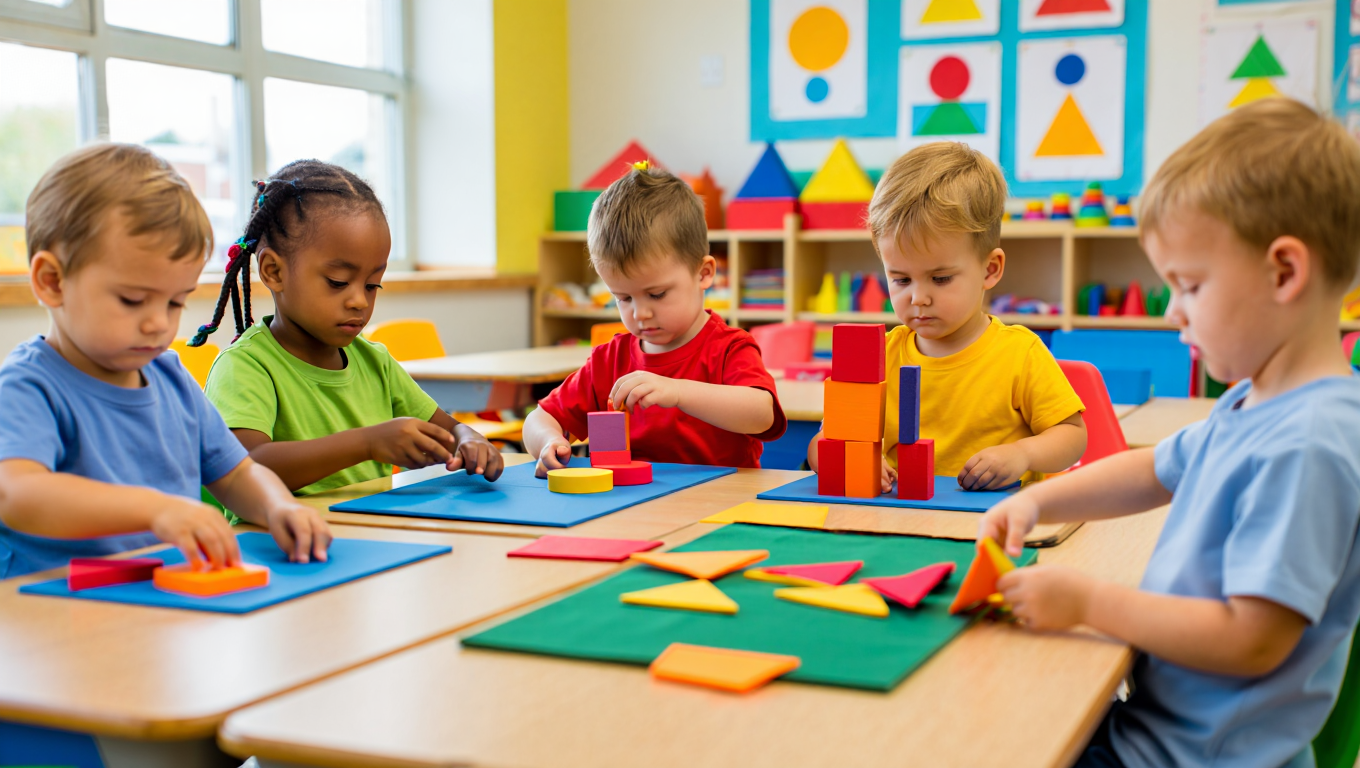
Shape activities for kindergarten provide essential building blocks for early math development. These fun exercises, just like alphabet learning activities, help young learners recognize visual patterns and understand spatial relationships in their environment.
Teachers find that regular shape practice improves children’s ability to identify and categorize objects. Studies show that strong shape recognition skills lead to better math performance later in school.
Early exposure to geometric concepts builds a foundation for more advanced learning.
Mathematical foundations: Children who play with shapes develop number sense and counting skills naturally. They learn to count sides, corners, and angles of different shapes, which helps them build connections between shapes and numbers.
Pattern recognition: Shape activities teach children to spot and create patterns. They notice how shapes fit together or repeat in sequences, which forms the basis for algebraic thinking and logic.
Engineering concepts: Building with shapes introduces basic engineering principles. Children learn about balance, stability, and structure when they stack blocks or create models, preparing them for future STEM learning.
Scientific observation: Working with shapes encourages careful observation and comparison. Children notice similarities and differences between objects, developing classification skills used in science.
Spatial reasoning: Manipulating shapes in different orientations helps children understand how objects can be turned, flipped, and moved. This spatial thinking is crucial for geometry, physics, and even reading maps.
Language development: Shape activities naturally expand vocabulary with words like circle, square, oval, and rectangle. Children learn to describe positions, sizes, and features of shapes, enhancing communication skills.
Problem-solving strategies: When children sort and match shapes, they develop logical thinking. They learn to analyze challenges, test possible solutions, and adjust their approach when needed.
The Best Shapes for Kindergarten Lessons
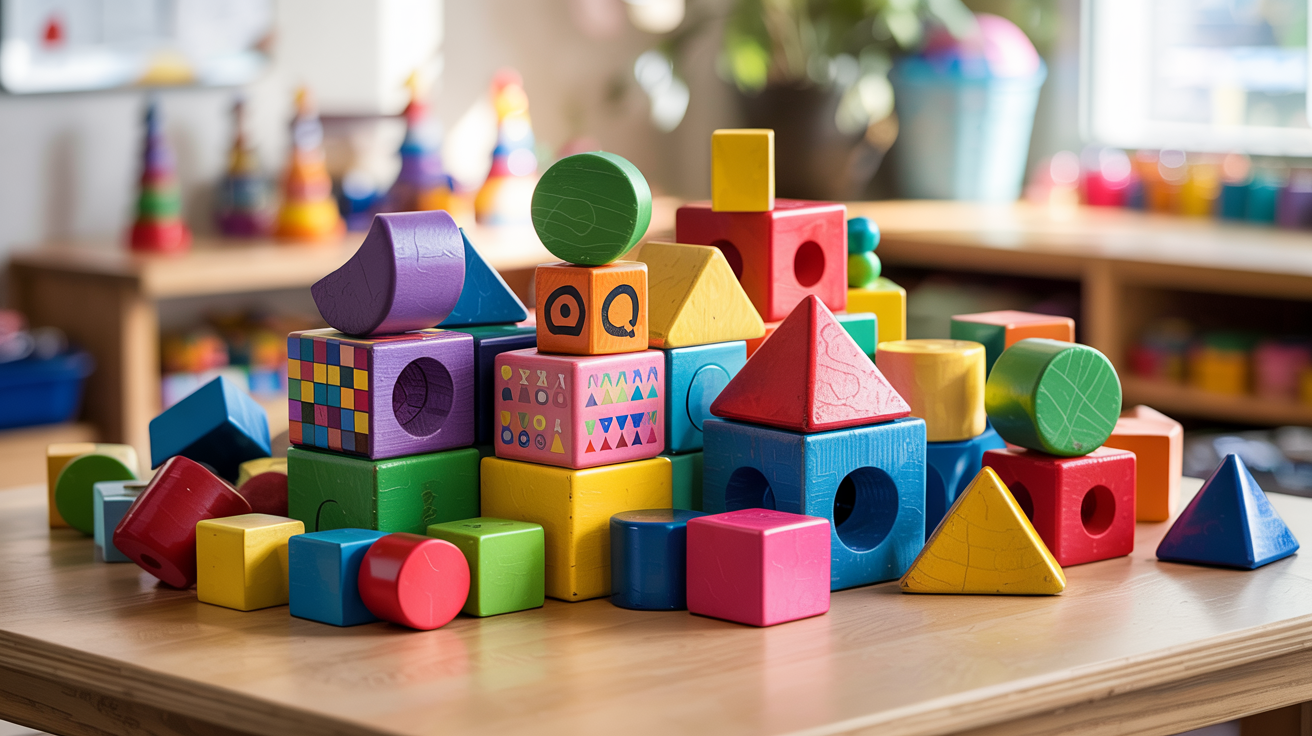
When teaching young children about geometry, starting with the right shapes makes learning easier. Basic shapes form the foundation for more complex math concepts.
Teachers often begin with simple, flat shapes before introducing three-dimensional objects.
Basic 2D Shapes to Teach First
These flat shapes are perfect starting points for young learners because they’re easy to draw, identify, and find in the environment around them.
Children can trace these shapes with their fingers or create them with craft materials.
- Circle: A round shape with no corners that children see in plates, wheels, and clocks. Students can practice drawing circles by tracing round objects or using string to create perfect circles.
- Square: A shape with four equal sides and four corners found in windows, tiles, and books. Children enjoy making squares with craft sticks or finding them in classroom objects.
- Triangle: A three-sided shape with three corners visible in roof tops and pizza slices. Students learn to count sides and corners while creating triangles with different materials.
- Rectangle: A four-sided shape with opposite sides equal in length, seen in doors and paper. Children find that rectangles come in different sizes but always maintain their distinct properties.
3D Shapes for Young Learners
After mastering flat shapes, kindergartners benefit from exploring shapes with depth. These three-dimensional objects help children understand the world in a more complete way and build spatial reasoning skills.
- Sphere: A perfectly round object that rolls easily, like balls and oranges. Children love to feel the smooth, curved surface of spheres and compare them to flat circles.
- Cube: A solid shape with six square faces, like dice and building blocks. Students enjoy stacking cubes and noticing how the square faces fit together.
- Cylinder: An object with circular ends connected by a curved surface, like cans and paper tubes. Children can make cylinders by rolling paper and securing the edges.
- Cone: A shape with a circular base that points to a tip, like ice cream cones. Students explore how cones balance differently than other three-dimensional shapes.
Interesting and Fun Preschool Shape Activities
Teaching young children about shapes can be both exciting and highly effective when paired with creativity and movement. Educators and parents can evolve everyday materials into playful learning tools that promote early geometry skills.
These shape activities for kindergarten students go beyond basic memorization by encouraging tactile, visual, and kinesthetic engagement.
Whether searching for 2D or 3D forms, each idea provides an opportunity for kids to interact with their environment while sharpening their understanding. From quiet crafts to energetic games, this list offers something for every kind of learner.
Hands-On and Crafty Shape Activities
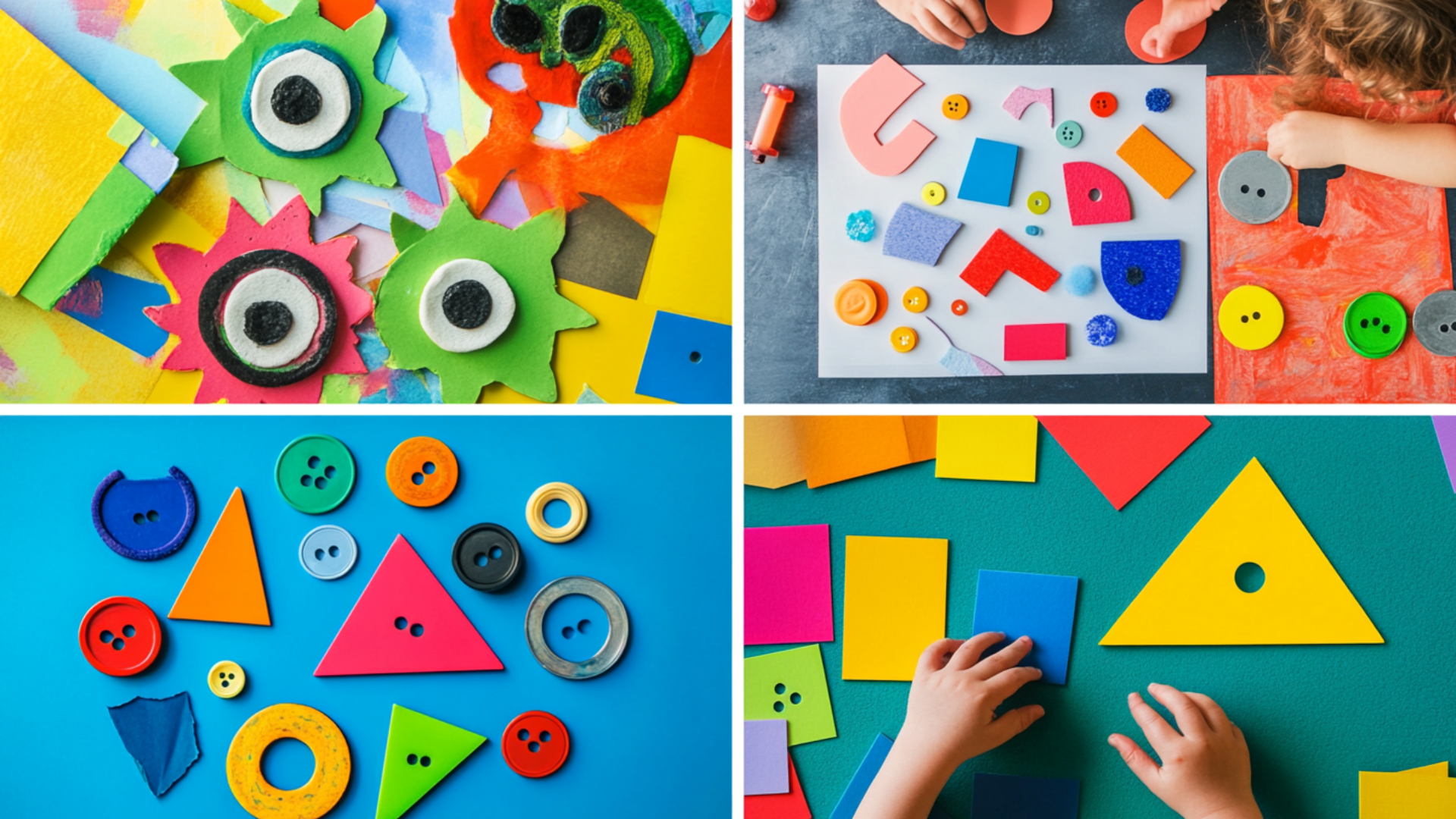
1. Monster Puppets with Geometric Features
2. Collage Creations Using Triangles and Squares
3. Playdough Mats with Tracing Guides
4. Button Sort by Sides and Corners
5. Build-Your-Own Pizza with Circle and Triangle Toppings
6. DIY Nail and String Boards
7. Fill-in Art Using Tissue Scraps and Cutouts
8. Catcher Rings Made from Pipe Cleaners
9. Geoboard Sculptures with Wikki Stix
10. Sun Catchers in Various Polygon Forms
11. Yarn-Wrapped Cardboard Templates
12. Paper Plate Portraits Using Basic Shapes
13. Crafty Headbands with 2D Features
14. Clothespin Match Game with Flashcards
15. Build-a-Robot with Scrap Cardboard Pieces
16. Foam Printing on Canvas
17. Mosaic Animals from Cut Paper Scraps
18. Faux Stained Glass Using Cellophane
19. DIY Puzzle Boards with Velcro Matching
20. Bead Necklaces Using Patterned Sequences
Active and Sensory-Based Shape Games
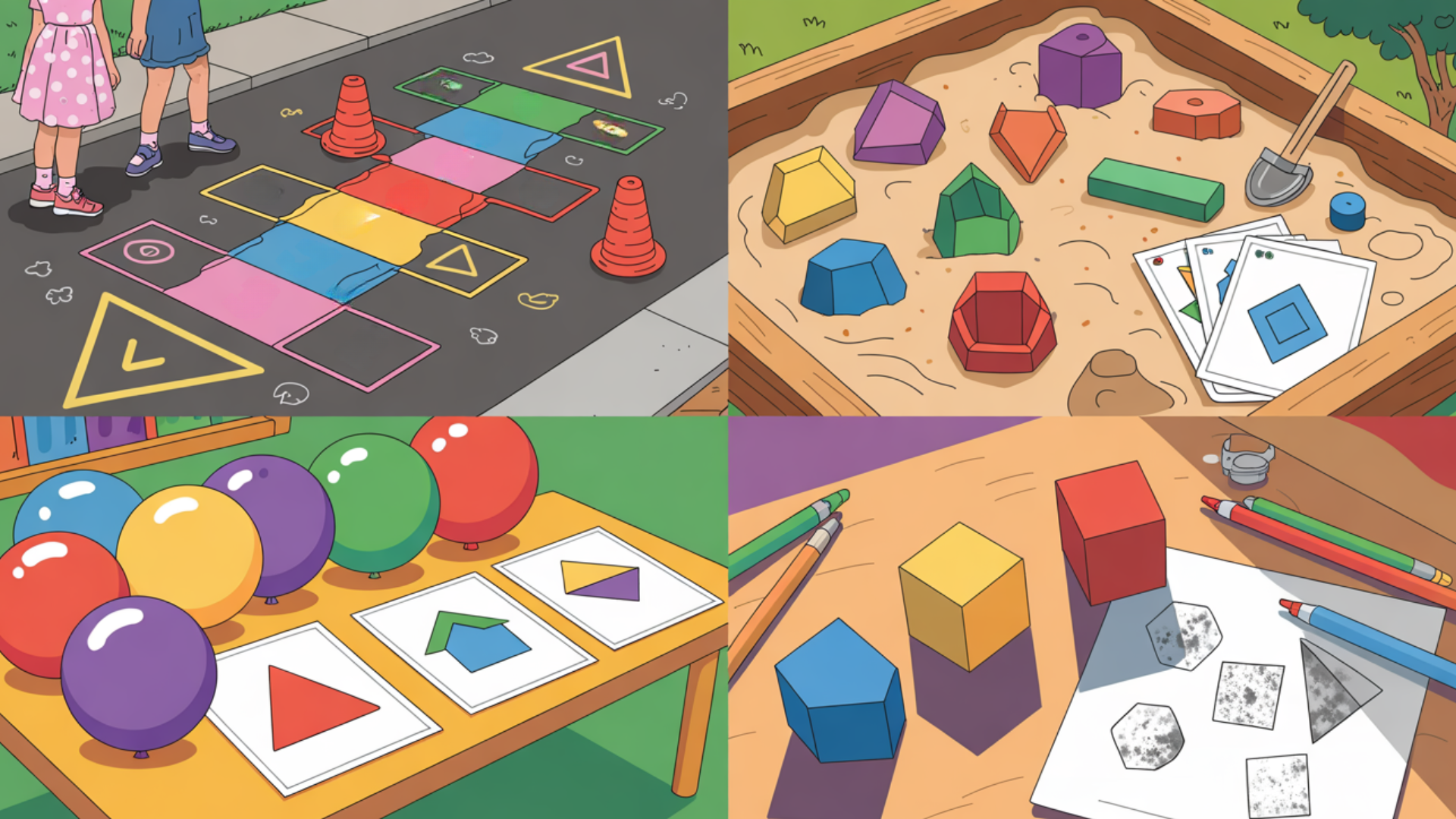
21. Hopscotch with Mixed Angles
22. Bean Bag Toss into Polygon Buckets
23. Hide-and-Find Corners and Curves
24. Scavenger Hunt for Classroom Geometry
25. Magnetic Fishing with Labeled Cutouts
26. Crawl and Climb Obstacle Adventure
27. Dig-and-Match in the Sandbox
28. Freeze Dance with Flashcard Prompts
29. Car Maze Tracing Polygon Tracks
30. Water Spray Target Challenge
31. Shadow Drawing in the Sunlight
32. Walk-the-Line with Glow Shapes
33. Relay Race to Match 3D Objects
34. Balloon Smash to Identify Sides
35. Tape Paths to Follow Different Figures
36. Music Stomp with Giant Floor Designs
37. Sensory Bin with Textured Matching Cards
38. Jump and Match on a Playmat
39. Hula Hoop Toss for Counting Sides
40. Frozen Toys in Ice Cube Shapes
Learning and Logic-Based Shape Study
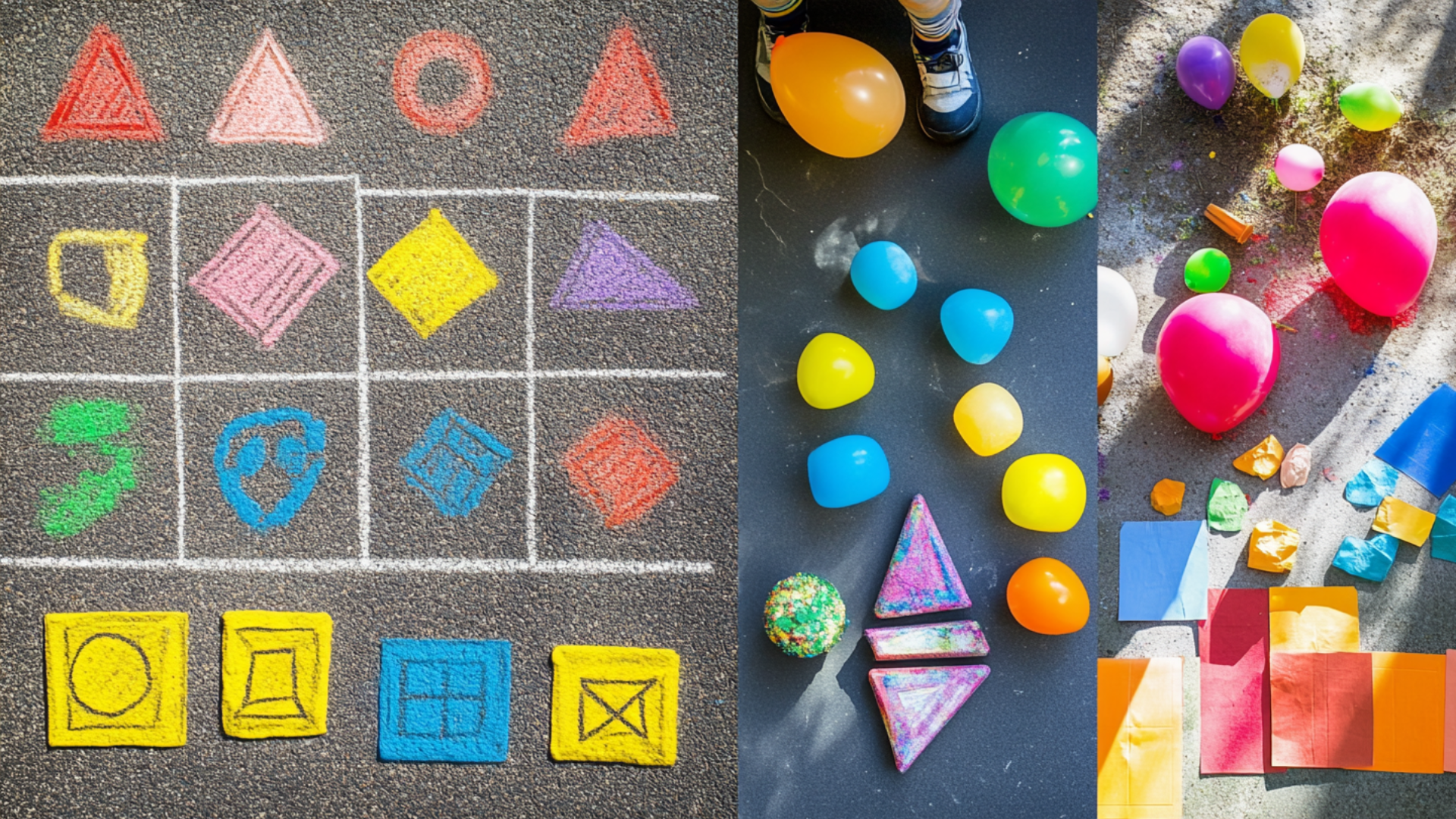
41. Tweezer Sorting by Curves and Angles
42. Stamp Journals with Daily Reviews
43. Pattern Block Creations with Templates
44. Build Tall Towers with 3D Objects
45. Bingo Game Using Custom Cards
46. Digital Tablet Challenges with Draw-and-Match
47. Tangram Stories with Characters and Scenes
48. Simple Venn Diagram Sorting
49. Story Time with Geometric Characters
50. Clipboard Hunt Around the Room
51. STEM Challenge to Form New Designs
Integrating Shape Activities into Daily Classroom Routines
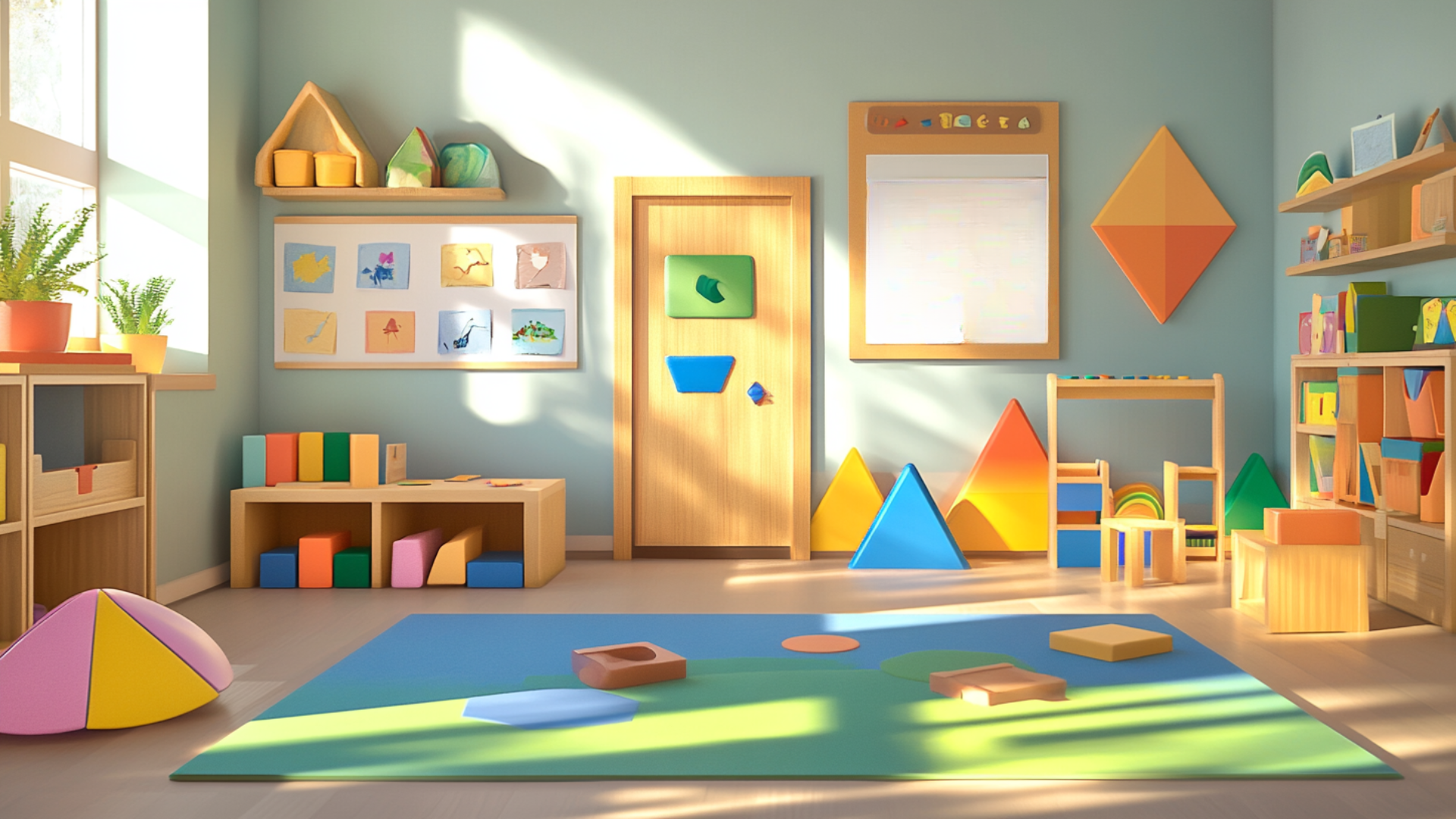
Adding shape activities for kindergarten into everyday classroom routines helps reinforce learning without taking extra time.
When teachers blend shape recognition into regular activities, children get more practice without feeling like they’re doing extra work. This approach makes geometry a natural part of the day rather than an isolated subject.
Shape learning can fit into many parts of the kindergarten day. Morning meetings, transitions between activities, and cleanup time all offer chances to talk about shapes.
Even outdoor play and snack time can become shape-learning moments with a little creativity.
| Routine | Shape Activity | Materials Needed | Time Required | Learning Goal |
|---|---|---|---|---|
| Morning Check-in | Students place name cards on shape of the day | Shape cutouts, name cards | 5 minutes | Shape recognition |
| Line-up Time | Children form groups based on shapes on cards | Shape cards | 2 minutes | Classification |
| Snack Time | Cut food into different shapes | Kid-safe knives, food | During snack | Shape creation |
| Story Time | Read books featuring shapes | Shape-themed books | 10 minutes | Shape vocabulary |
| Dismissal | Find a shape in the room before leaving | None | 3 minutes | Shape identification |
Conclusion
Shape activities for kindergarten offer more than just fun learning moments. These hands-on tasks help young students build basic math skills and improve their ability to spot visual differences.
When teachers mix shape games into daily lessons, children gain better finger control and learn to name what they see around them.
The activities in this blog give teachers and parents useful tools to teach shape concepts through play. Kids who learn shapes early often find it easier to understand letters and numbers later.
Shape learning works best when it connects to real life. When students touch, sort, and build with shapes, they remember the lessons better.
By adding these shape activities for kindergarten to lesson plans, educators help build a strong base for future learning success.

